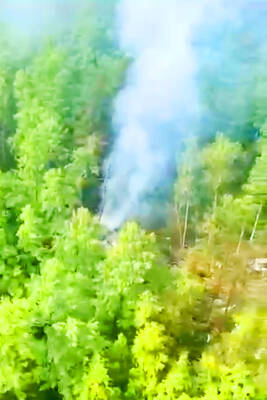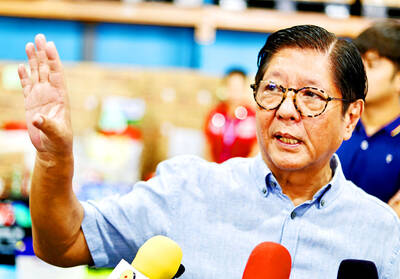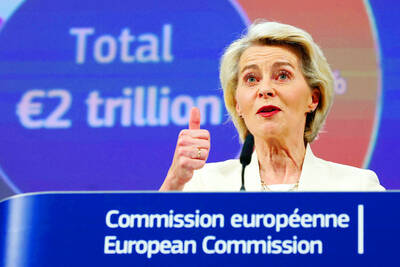Scientists said on Thursday they have designed tiny wires, 10,000 times thinner than a human hair, but with the same electrical capacity as copper, in a major step toward building smaller, more potent computers.
The advance, described in the US journal Science, shows for the first time that wires one atom tall and four atoms wide can carry a charge as well as conventional wires.
That could lead to even tinier electronic devices in the future as well as new steps toward quantum computing, an industry still in its infancy that would create powerful computers that could sift through massive amounts of data faster than current digital computers, which use binary code.
“Driven by the semiconductor industry, computer chip components continuously shrink in size, allowing ever smaller and more powerful computers,” said researcher Michelle Simmons of the University of New South Wales in Sydney, Australia. “We are on the threshold of making transistors out of individual atoms. But to build a practical quantum computer, we have recognized that the interconnecting wiring and circuitry also needs to shrink to the atomic scale.”
Scientists were able to forge atom-sized wires in silicon using a technique called scanning tunneling microscopy, whereby they placed chains of phosphorus atoms within a silicon crystal.
“This technique not only allows us to image individual atoms, but also to manipulate them and place them in position,” said researcher Bent Weber, the lead author of the study.
The nano-wires they built this way ranged from 1.5 to 11 nanometers thick. Scientists observed no increased difficulty in coaxing an electric charge through them — what has previously been considered a major obstacle to quantum computing.
In an accompanying Perspective article, David Ferry of the School of Electrical, Computer and Energy Engineering at Arizona State University called the findings “good news for the semiconductor industry.”

FOREST SITE: A rescue helicopter spotted the burning fuselage of the plane in a forested area, with rescue personnel saying they saw no evidence of survivors A passenger plane carrying nearly 50 people crashed yesterday in a remote spot in Russia’s far eastern region of Amur, with no immediate signs of survivors, authorities said. The aircraft, a twin-propeller Antonov-24 operated by Angara Airlines, was headed to the town of Tynda from the city of Blagoveshchensk when it disappeared from radar at about 1pm. A rescue helicopter later spotted the burning fuselage of the plane on a forested mountain slope about 16km from Tynda. Videos published by Russian investigators showed what appeared to be columns of smoke billowing from the wreckage of the plane in a dense, forested area. Rescuers in

Philippine President Ferdinand Marcos Jr is to meet US President Donald Trump this week, hoping Manila’s status as a key Asian ally would secure a more favorable trade deal before the deadline on Friday next week. Marcos would be the first Southeast Asian leader to meet Trump in his second term. Trump has already struck trade deals with two of Manila’s regional partners, Vietnam and Indonesia, driving tough bargains in trade talks even with close allies that Washington needs to keep onside in its strategic rivalry with China. “I expect our discussions to focus on security and defense, of course, but also

POINTING FINGERS: The two countries have accused each other of firing first, with Bangkok accusing Phnom Penh of targeting civilian infrastructure, including a hospital Thai acting Prime Minister Phumtham Wechayachai yesterday warned that cross-border clashes with Cambodia that have uprooted more than 130,000 people “could develop into war,” as the countries traded deadly strikes for a second day. A long-running border dispute erupted into intense fighting with jets, artillery, tanks and ground troops on Thursday, and the UN Security Council was set to hold an emergency meeting on the crisis yesterday. A steady thump of artillery strikes could be heard from the Cambodian side of the border, where the province of Oddar Meanchey reported that one civilian — a 70-year-old man — had been killed and

‘OPPORTUNITY TO ENGAGE’: Antonio Costa and Ursula von der Leyen are to meet Chinese President Xi Jinping to discuss EU-China relations and geopolitical challenges Top leaders from China and the EU are to hold a summit in Beijing this week, as the major economic powers seek to smooth over disputes ranging from trade to the Ukraine conflict. Beijing and Brussels have been gearing up to mark the 50th anniversary of the establishment of diplomatic ties, but a suite of squabbles over state subsidies, market access and wartime sanctions have dampened the festivities. A spokesperson for the Chinese Ministry of Foreign Affairs yesterday confirmed that European Council President Antonio Costa and European Commission President Ursula von der Leyen would visit on Thursday. The statement came after the EU